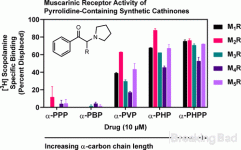Dimethocain (DMC, larocaine), a synthetic derivative of cocaine, is a widely distributed "legal high" consumed as a "new psychoactive substance" (NPS) without any safety testing, for example studies of metabolism. Therefore, the purpose of this work was to study its in-vivo and in-vitro metabolism by use of liquid chromatography-(high resolution) mass spectrometry (LC-HRMS). DMC was administered to male Wistar rats (20 mg kg(-1)) and their urine was extracted either by solid-phase extraction after enzymatic cleavage of conjugates or by use of protein precipitation (PP). The metabolites were separated and identified by LC-HRMS. The main phase I reactions were ester hydrolysis, deethylation, hydroxylation of the aromatic system, and a combination of these. The main phase II reaction was N-acetylation of the p-aminobenzoic acid part of the unchanged parent compound and of several phase I metabolites. The metabolites identified were then used for identification of DMC in rat urine after application of a common user's dose. By use of GC-MS and LC-MS
standard urine-screening approaches (SUSAs), DMC and its metabolites could be detected in the urine samples.
Dimethocain optional dosages
Dimethocain needed for leisure use is normally used for instance like cocaine, insufflated, it really is also easy to take it intravenous. It's not necessarily recommended to take the unusually high dosage amounts of dimethocain to obtain a cocaine like rush, that the amount can be excessive it can be considered a main problem for your cardiovascular system. Insufflated a normal the amount of dimethocain ranges from 100 close to 2 hundred mg, but newbees should start off with lesser levels, suggested are Fifty milligrams.
In case that used intravenous, than the medication dosage could be far lower, however buyers even so use up to A hundred milligrams to reach greater effects.

